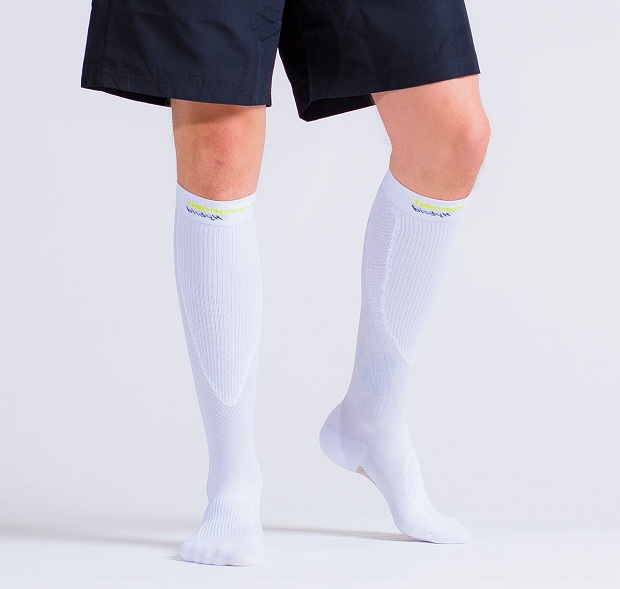The Lowdown on Compression Stockings

Compression socks are medical grade garments designed to improve blood flow. Also called support socks, these pieces of clothing gently squeeze your legs to move blood up thus help prevent leg swelling and, to a lesser extent, blood clots. People wear them due to various reasons – some of the most common ones being varicose or spider veins, pregnancy-related swelling, lymphedema or edema, poor circulation from sitting for long periods, post-surgical treatment and deep vein thrombosis. Aside from this, support socks can also be used as a preventive measure to maintain healthy legs for those who spend long periods of time on their feet.
How high the compression socks should go on your legs will depend on the reason why you need them. Knee high support socks are easier to wear and generally are more comfortable than wearing thigh-highs. If you want to wear them for a non-medical reason, like for standing for long time periods, it makes sense to start with knee high support socks first. If you are considering them due to a medical condition that you have, you should consult with your physician first so that he/she recommends what’s best for you.
One of the most confusing aspects of choosing the right support socks is understanding the level of compression. Different types of support socks (knee high, thigh high and pantyhose) come with different numbers that indicate how much compression they have. Here are the standard compression levels for support socks.
Over the Counter 15-20 mmHg
These provide a low level of compression and are a great option for fatigued legs due to long periods of sitting or standing. A lot of people wear these socks for flying and travel.
Medical Grade Class 1 20-30 mmHg
These are the most widely used medical grade socks as they provide competent compression to the legs without being too strong. They can certainly help with swelling, varicose veins, spider veins, and are good to wear after a surgery. Pregnant women also find them helpful in alleviating the heaviness, swelling, and aches in their legs.
Medical Grade Class 2 30-40mmHg
This grade is mostly recommended for people who have blood clots or deep vein thrombosis. If your doctor advises you to get this type of socks, look for ones made from a more durable material. Sheer compression models are more prone to snags and holes.
Medical Grade Class 3 40-50 mmHg
If you are considering this level of compression socks – mind you, they are very strong – which means you should consult with your doctor first. They are recommended only for severe venous stasis, lymphedema and wound management.






